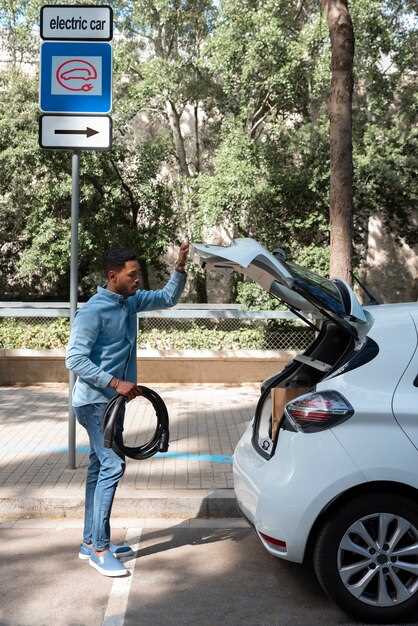Do Hybrid Cars Perform Well on Highways?

As the automotive industry continues to evolve, hybrid cars have emerged as a popular choice for environmentally conscious consumers seeking efficiency without sacrificing performance. These vehicles combine traditional internal combustion engines with electric propulsion systems, creating a unique driving experience that warrants in-depth exploration. Understanding how hybrid cars perform on highways is crucial for potential buyers and enthusiasts alike.
Hybrid vehicles are designed to optimize fuel efficiency while maintaining adequate power for highway driving. Unlike conventional cars, hybrids leverage their electric motors at lower speeds and rely on their gasoline engines for higher speeds, making them well-suited for long-distance travel. This seamless transition enhances not only fuel economy but also accelerative capabilities when merging onto busy highways.
In addition to their fuel efficiency, hybrid cars incorporate advanced technology that contributes to their overall performance on highways. Regenerative braking systems recharge the battery during deceleration, improving energy management and extending driving range. The result is a vehicle that not only reduces carbon emissions but also provides a driving experience that is both responsive and sustainable.
As we delve deeper into the various aspects of hybrid car performance on highways, we will examine factors such as acceleration, handling, and fuel consumption. By highlighting the strengths and potential limitations of hybrid technology, this article aims to provide a comprehensive perspective for consumers considering their next vehicle purchase.
Understanding Fuel Efficiency in Hybrid Vehicles
Fuel efficiency in hybrid vehicles is a key advantage that sets them apart from traditional gasoline-powered cars. Hybrid vehicles utilize two power sources: an internal combustion engine and an electric motor. This combination allows hybrids to optimize fuel consumption by leveraging the strengths of both power sources.
When driving at higher speeds, such as on highways, hybrid vehicles are designed to operate more efficiently. They typically rely on their gasoline engines for power, but they also employ their electric motors during acceleration. This results in reduced fuel consumption when compared to traditional vehicles, especially in conditions that require frequent acceleration and deceleration.
The synergy between the electric motor and the gasoline engine also minimizes fuel use during periods of idling. Unlike conventional vehicles that continue to consume fuel when stopped, many hybrids automatically shut off their engines when the vehicle is stationary and restart seamlessly when the accelerator is pressed. This feature contributes significantly to overall fuel efficiency.
Regenerative braking is another critical component that enhances fuel efficiency. When a hybrid vehicle slows down, the electric motor acts as a generator, converting kinetic energy back into electrical energy, which is then stored in the battery. This process reduces the reliance on the gasoline engine and allows the vehicle to use electric power for certain driving scenarios, further optimizing fuel economy.
Hybrid vehicles also incorporate advanced engineering and aerodynamics, which improve their overall efficiency. Lightweight materials and streamlined designs reduce drag, allowing the vehicle to maintain speed with less power. This is particularly beneficial on highways, where maintaining speed consistently is crucial for maximizing fuel efficiency.
In summary, the fuel efficiency of hybrid vehicles is a result of the strategic integration of electric and gasoline power, technological innovations, and design considerations. By understanding these factors, drivers can appreciate how hybrids enhance fuel economy, especially in highway driving conditions.
Acceleration and Speed Comparisons with Traditional Cars
Hybrid cars have become a significant segment of the automotive market, combining internal combustion engines with electric propulsion. When it comes to acceleration and speed, hybrids often present unique characteristics compared to traditional gasoline-powered vehicles. The key to understanding these differences lies in their power delivery and engineering design.
Hybrid vehicles typically offer instant torque due to their electric motors, which allows them to accelerate quickly from a standstill. This characteristic often results in impressive initial speed bursts, especially in urban environments where frequent stops and starts are common. For instance, many hybrids can achieve 0 to 60 mph in a comparable time frame to traditional cars within the same class, with some high-performance hybrids outperforming conventional models.
However, the performance dynamics change at higher speeds. Traditional gasoline engines tend to deliver more sustained power and are designed for higher RPMs, which can make them faster on highways over longer distances. While hybrids can maintain respectable speeds, their reliance on electric motors can lead to limitations when reaching maximum velocity. The performance can also depend on the specific hybrid model, as some prioritize efficiency over speed, thereby affecting overall performance metrics.
Another factor to consider is the weight difference between hybrids and traditional cars. Hybrids generally weigh more due to battery packs, which can impact acceleration times, particularly in higher-speed scenarios. This added weight may lead to marginally slower acceleration compared to similarly powered conventional vehicles, though advances in technology are continually narrowing this gap.
In real-world driving conditions, hybrid cars often excel in fuel efficiency, making them favorable for longer highway travels. While they may not always match the top speeds of traditional cars, their ability to quickly reach cruising speeds with efficient power usage has its own advantages. In summary, while hybrids offer competitive acceleration and unique advantages in urban settings, traditional vehicles typically excel in sustained speed and overall performance on highways.
Impact of Aerodynamics on Hybrid Car Performance
Aerodynamics plays a crucial role in the performance of hybrid cars, especially on highways where speed and efficiency become significant factors. The design of a vehicle’s exterior affects how air flows around it, impacting fuel consumption and overall performance. A streamlined shape reduces drag, allowing the car to maintain higher speeds with less energy expenditure. This efficiency is particularly important for hybrid vehicles, which rely on both electric and gasoline power sources.
The coefficient of drag (Cd) is a key measurement in understanding a car’s aerodynamics. A lower Cd indicates better aerodynamics, which translates to reduced air resistance. For hybrid cars, achieving a low Cd not only improves highway fuel efficiency but also enhances stability and handling at high speeds. Manufacturers often implement features such as smooth underbodies, air dams, and spoilers to optimize aerodynamics.
Regenerative Braking and Its Effects on Highway Driving

Regenerative braking is a pivotal feature in hybrid vehicles that enhances overall efficiency, particularly during highway driving. This technology captures kinetic energy that would typically be lost during braking and converts it into electrical energy, which is then stored in the vehicle’s battery. This process not only increases the vehicle’s range but also promotes energy conservation.
On highways, the advantages of regenerative braking become increasingly apparent. When a hybrid car approaches a downhill slope or reduces speed in traffic, regenerative braking can effectively harness the energy being expended. Traditional vehicles rely solely on friction brakes, which dissipate energy as heat, while hybrids can simultaneously recharge their batteries, prolonging their electric driving range.
Furthermore, the energy recovery system allows hybrid cars to experience extended periods of electric-only driving, especially in stop-and-go traffic typical of urban areas, leading to improved fuel economy. As highway scenarios often include varying speeds and terrains, regenerative braking optimizes the preservation of energy that can be used for acceleration or cruising.
However, it is essential to consider the limitations of regenerative braking under highway conditions. At high speeds, the braking force produced by regenerative systems is generally less effective than that of traditional brakes, particularly in emergency situations. Therefore, hybrid cars rely on a dual braking system, seamlessly transitioning between regenerative and friction braking to maintain safety and performance.
Overall, the integration of regenerative braking in hybrid vehicles significantly impacts highway driving by enhancing energy efficiency, reducing fuel consumption, and providing a more sustainable driving experience. As technologies continue to improve, the effectiveness of regenerative braking is expected to advance, further solidifying its role in hybrid automotive performance.
Real-World Highway Driving Scenarios for Hybrids
Hybrid cars are designed to optimize fuel efficiency while providing sufficient power for highway driving. One common scenario encountered by hybrid drivers on highways is maintaining consistent speeds. With their efficient powertrains, hybrids can seamlessly switch between electric and gasoline engines to ensure minimal fuel consumption during long stretches of uninterrupted driving.
Another situation involves merging onto busy highways. Hybrids, especially those equipped with robust electric motors, can deliver quick acceleration. This responsiveness is vital for entering high-speed traffic safely and efficiently. The instant torque from the electric motor enables hybrids to keep pace with conventional vehicles during this critical phase.
When it comes to high-speed cruising, hybrids benefit from aerodynamic designs and optimized engine configurations. Many models incorporate features that reduce drag, helping to improve fuel economy at cruising speeds. Under these conditions, the gasoline engine operates more often, aiding in performance while maintaining efficient fuel use.
Hybrid technology also shines in scenarios involving sudden stops and starts, such as in highway traffic jams. Regenerative braking systems convert kinetic energy into electrical energy, recharging the battery when the vehicle slows down. This process not only enhances efficiency but also ensures the vehicle is ready for swift acceleration when the traffic moves again.
In long-distance travel, hybrids demonstrate their strength through extended highway journeys. Many hybrids have impressive ranges thanks to their combination of electric and gasoline power. This reduces the frequency of refueling, making them ideal for road trips. Furthermore, driving at steady speeds often allows hybrids to reach their optimal fuel efficiency, providing an economical solution for travelers.
Finally, real-world driving scenarios also include negotiating steep grades or highways with varying elevations. Hybrid vehicles utilize their electric motor to assist the gasoline engine in these situations, delivering the necessary power without compromising efficiency. Depending on the driving style and road conditions, hybrids can traverse hilly terrains effectively, showcasing their versatility.
Maintenance Considerations for Highway Driving with Hybrids
Maintaining a hybrid vehicle for optimal performance on highways involves several key considerations. Regular maintenance not only enhances fuel efficiency but also ensures safety and longevity of the vehicle.
- Battery Care:
- Monitor the health of the hybrid battery periodically.
- Keep the battery cool and avoid extreme temperatures to extend its lifespan.
- Tire Maintenance:
- Check tire pressure regularly as it affects fuel efficiency.
- Rotate tires according to the manufacturer’s recommendation to ensure even wear and prolong life.
- Fluid Checks:
- Inspect and replace engine oil as needed, ensuring it meets hybrid specifications.
- Check coolant levels for both the engine and inverter to prevent overheating during long trips.
- Brake System:
- Examine brake pads and rotors regularly, as hybrids often utilize regenerative braking.
- Replace brake fluid as specified to maintain effective braking performance.
- Filters:
- Change air filters to ensure optimal engine performance and fuel efficiency.
- Replace cabin air filters for cleaner air during highway travel.
- Regular Inspections:
- Schedule routine inspections to identify potential issues before they escalate.
- Monitor software updates from the manufacturer to enhance vehicle functions.
Overall, diligent maintenance tailored to the unique aspects of hybrid vehicles ensures safe and efficient driving on highways. Adhering to these guidelines not only promotes performance but also contributes to a sustainable driving experience.

